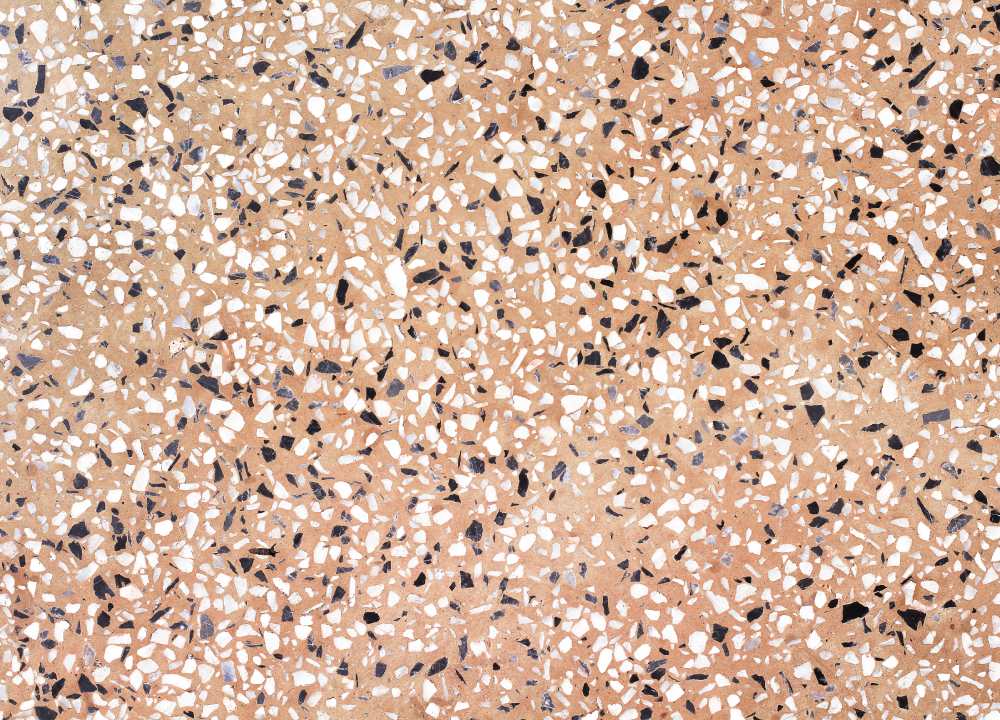Terrazzo construction is a fascinating and versatile craft that involves creating durable and visually appealing flooring and surface finishes. In this comprehensive guide, we will delve into the world of terrazzo construction services, covering its history, materials, construction process, benefits, and modern applications.
Terrazzo: A Brief History
Terrazzo is an ancient flooring technique that dates back to the Venetian era in Italy. The word “terrazzo” is derived from the Italian term “terra,” meaning ground, as it initially consisted of crushed marble fragments and clay. Terrazzo was first used in 15th-century Venice to create affordable yet luxurious flooring for churches and homes. Over the centuries, the craft evolved, incorporating more materials and designs.
Materials Used in Terrazzo
- Aggregates: Terrazzo primarily consists of aggregates, such as marble, glass, granite, or other stone chips. These aggregates determine the flooring’s appearance.
- Binder: The binder, often made of cement or epoxy, holds the aggregates together. It provides durability and a polished finish.
- Colorants: Pigments or dyes can be added to the binder to achieve various colors and patterns.
Terrazzo Construction Process
- Surface Preparation: The surface to be covered with terrazzo must be cleaned and leveled. This involves removing any existing flooring, adhesives, or contaminants.
- Mixing and Batch Preparation: Aggregates are combined with the binder in precise proportions to create the terrazzo mix. Colorants can be added at this stage to achieve the desired color.
- Pouring and Spreading: The mixed terrazzo is poured onto the prepared surface and spread evenly. Skilled workers use hand trowels or power trowels to ensure an even surface.
- Seeding: For a Venetian terrazzo look, small, decorative chips are scattered onto the wet surface. These chips are pressed into the mix to ensure they adhere securely.
- Curing: The terrazzo mix is left to cure for several days, allowing the binder to harden and the surface to become durable.
- Grinding and Polishing: After curing, the terrazzo surface is ground down to reveal the embedded aggregates. The process involves progressively finer grits of abrasives until the desired finish is achieved.
- Sealing and Protecting: A sealer is applied to protect the terrazzo from staining and moisture. Polishing may continue at this stage to achieve a glossy finish.
Benefits of Terrazzo
Terrazzo offers a range of benefits, making it a popular choice for flooring and surface finishes:
- Durability: Terrazzo is incredibly long-lasting and can withstand heavy foot traffic and wear, making it ideal for commercial and high-traffic areas.
- Aesthetic Versatility: With numerous aggregate and color options, terrazzo allows for a wide range of design possibilities. Custom patterns and logos can be incorporated.
- Low Maintenance: Terrazzo is easy to clean and maintain, requiring minimal effort to keep its appearance looking pristine.
- Environmentally Friendly: Terrazzo can contain recycled materials, reducing its environmental impact. Additionally, it has a long lifespan, minimizing the need for replacements.
- Hygienic: Its non-porous surface is resistant to bacteria and mold growth, making it a hygienic choice for healthcare facilities and restaurants.
- Temperature Regulation: Terrazzo’s natural thermal mass can help regulate indoor temperatures, reducing the need for heating or cooling.
Modern Applications
Terrazzo has found a resurgence in popularity and is being used in a variety of contemporary applications:
- Commercial Spaces: Terrazzo is commonly used in commercial buildings, such as office spaces, hotels, and shopping centers, due to its durability and timeless elegance.
- Residential Flooring: Many homeowners are opting for terrazzo as a unique and low-maintenance flooring option in kitchens, bathrooms, and living areas.
- Public Areas: Terrazzo is a preferred choice for public spaces like airports, museums, and government buildings due to its durability and design versatility.
- Restaurants and Cafes: The aesthetic appeal and ease of cleaning make terrazzo flooring a great choice for restaurants, ensuring both functionality and ambiance.
- Hospitals and Healthcare Facilities: The hygienic properties of terrazzo are invaluable in healthcare settings where cleanliness is paramount.
- Educational Institutions: Terrazzo is being used in schools and universities for its durability and to create a visually stimulating environment for students.
- Decorative Elements: Beyond flooring, terrazzo is employed in countertops, staircases, and even decorative wall panels, offering a seamless flow of design throughout spaces.
Finding a Terrazzo Construction Service
When considering terrazzo construction for your project, it’s essential to find a reputable and experienced terrazzo construction service. Here are some steps to help you in your search:
- Research: Look for local companies with a strong portfolio and good reviews. Check their previous work to assess their expertise.
- Consultation: Contact potential contractors for an initial consultation. Discuss your project, design ideas, and budget to determine if they are a good fit.
- References: Ask for references from past clients to gain insights into their work quality and professionalism.
- Pricing: Obtain detailed quotes and compare them. Be cautious of unusually low offers, as quality materials and craftsmanship come at a cost.
- Licensing and Insurance: Ensure the contractor is licensed, insured, and adheres to safety and environmental regulations.
Terrazzo construction is a timeless art that has evolved to meet modern demands for durability, aesthetics, and sustainability. Whether you’re considering it for a residential or commercial project, terrazzo offers a unique and enduring solution that combines form and function.

